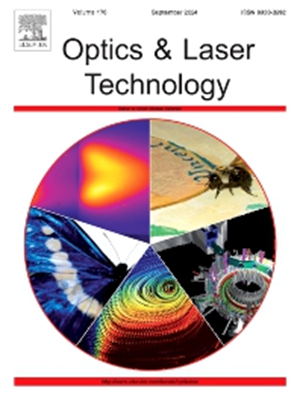MERFusion: A multiscale edge-preserving filter combined with Retinex enhancement for infrared and visible image fusion
IF 4.6
2区 物理与天体物理
Q1 OPTICS
引用次数: 0
Abstract
The limitations of a single sensor stem from its equipment’s optical capabilities, which prevent it from capturing diverse data on targets across multiple dimensions, thus enabling sophisticated vision tasks through image fusion. Currently, mainstream fusion methods suffer from significant loss of intricate details and the introduction of artifacts during low-light image fusion, resulting in unsatisfactory visual effects. To address these issues, this paper proposes a multiscale edge-preserving filter combined with Retinex enhancement for infrared and visible image fusion. The method incorporates low-light enhancement technology into the image fusion process, effectively tackling the challenges associated with low-light image fusion. Initially, we propose a weighted Retinex model for visible image enhancement, which is designed to efficiently incorporate details, texture, and brightness information in the darker regions of the source image. Furthermore, the proposed filter, benefiting from multiscale segmentation and edge preservation, decomposes the image into three distinct layers: base, infrared, and visible. Additionally, the designed gradient saliency fusion rule is adept at preserving the salient characteristics of infrared targets. Finally, by refining and integrating the detail layer with the base layer, we achieve the final fused image. Experimental findings indicate the superiority of this paper’s method over current state-of-the-art methods.
求助全文
约1分钟内获得全文
求助全文
来源期刊
CiteScore
8.50
自引率
10.00%
发文量
1060
审稿时长
3.4 months
期刊介绍:
Optics & Laser Technology aims to provide a vehicle for the publication of a broad range of high quality research and review papers in those fields of scientific and engineering research appertaining to the development and application of the technology of optics and lasers. Papers describing original work in these areas are submitted to rigorous refereeing prior to acceptance for publication.
The scope of Optics & Laser Technology encompasses, but is not restricted to, the following areas:
•development in all types of lasers
•developments in optoelectronic devices and photonics
•developments in new photonics and optical concepts
•developments in conventional optics, optical instruments and components
•techniques of optical metrology, including interferometry and optical fibre sensors
•LIDAR and other non-contact optical measurement techniques, including optical methods in heat and fluid flow
•applications of lasers to materials processing, optical NDT display (including holography) and optical communication
•research and development in the field of laser safety including studies of hazards resulting from the applications of lasers (laser safety, hazards of laser fume)
•developments in optical computing and optical information processing
•developments in new optical materials
•developments in new optical characterization methods and techniques
•developments in quantum optics
•developments in light assisted micro and nanofabrication methods and techniques
•developments in nanophotonics and biophotonics
•developments in imaging processing and systems

 求助内容:
求助内容: 应助结果提醒方式:
应助结果提醒方式:


